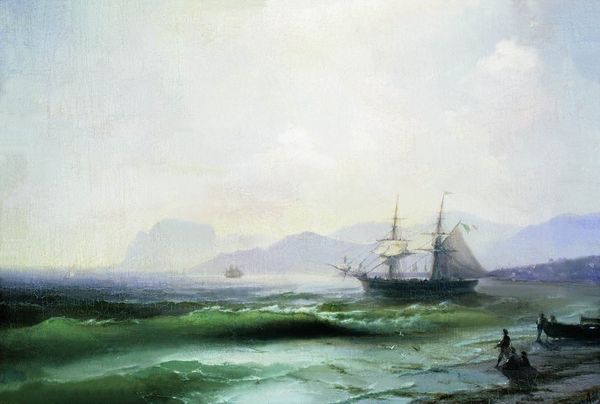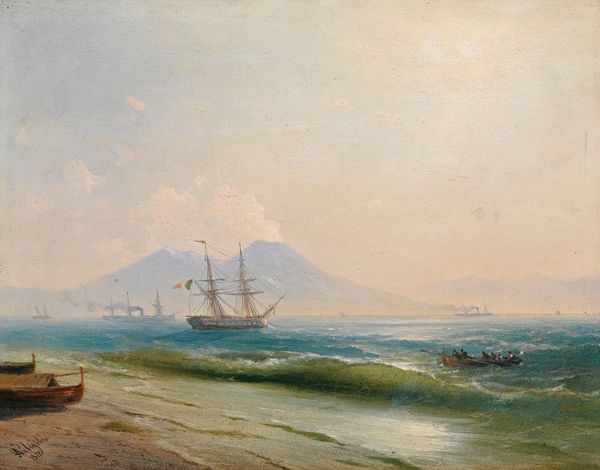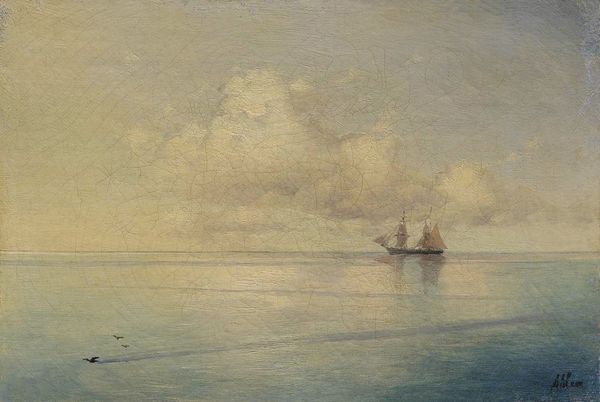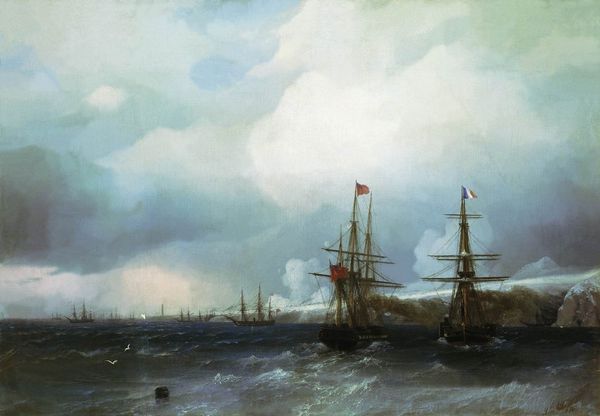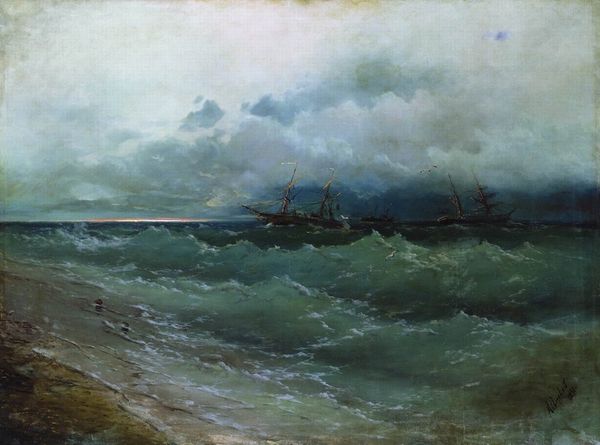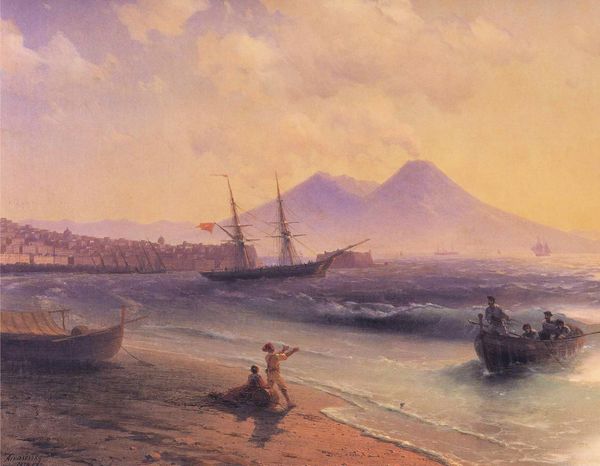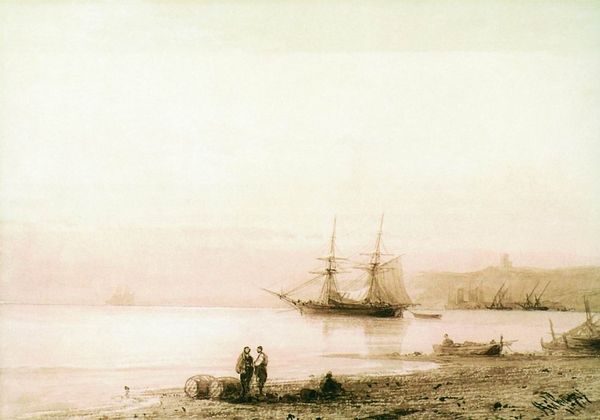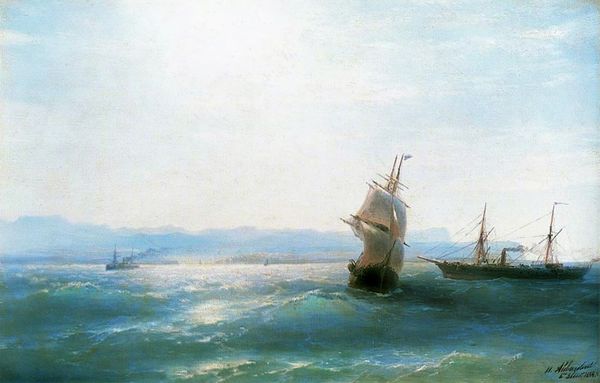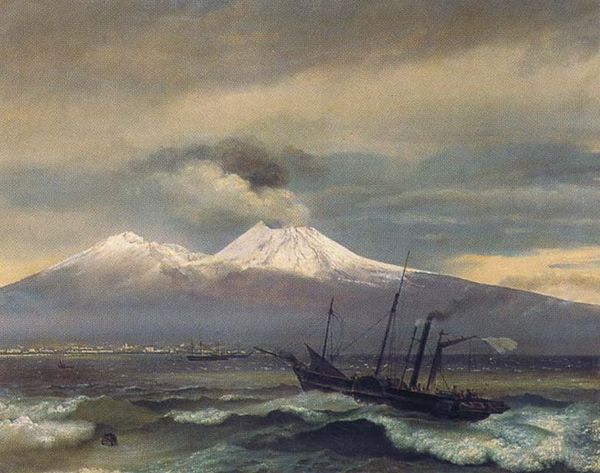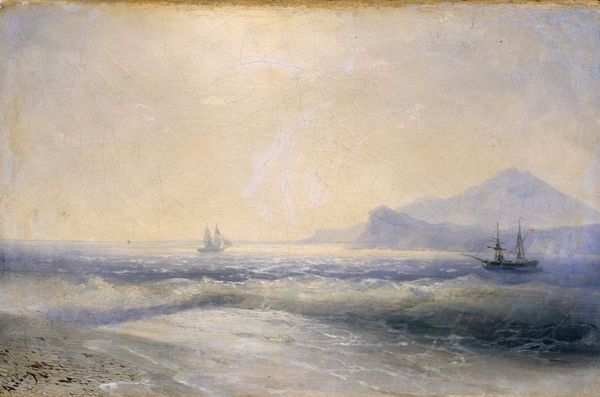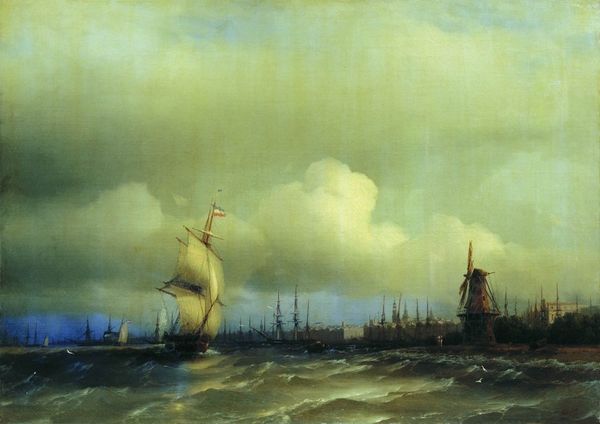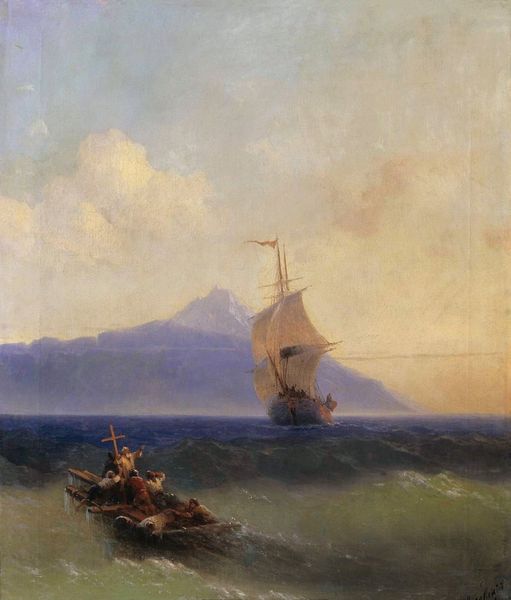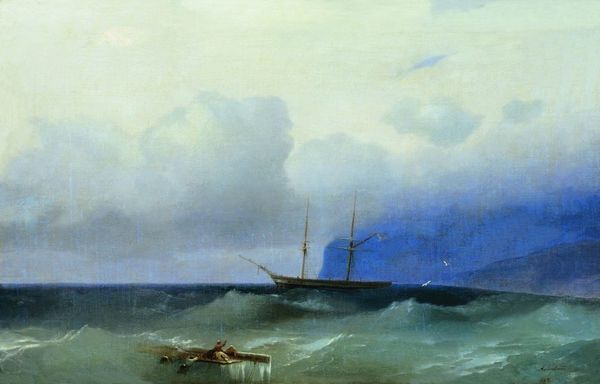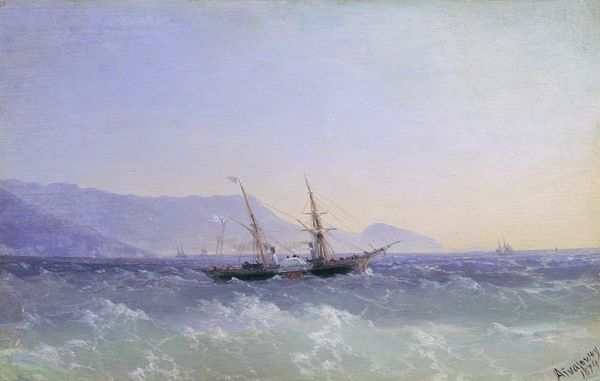
Copyright: Public domain
Editor: So here we have Aivazovsky's "Seascape," painted in 1878 with oil. It's quite a captivating work. There’s a dramatic quality, almost theatrical, to the lighting and the rough sea. I wonder, what kind of cultural stories are bubbling beneath the surface here? Curator: This painting invites us to think about the romanticism and orientalism of the era. Aivazovsky, though Armenian, was deeply entrenched in the Russian art world. His seascapes were wildly popular, fueled by imperial ambitions and a fascination with exotic, often orientalized, locales. The turbulent sea, the distant mountains… does it speak to the relationship between nature and power, perhaps even empire? Editor: Empire, you say? I hadn’t thought of it like that. More like humans humbled by nature. I mean, look at the ships seemingly at the mercy of the waves, near the coast of a quite inhospitable land. Is there anything particularly Russian, or should I say, imperial, about depicting nature as so dominant? Curator: It’s crucial to consider the time and the artist’s position. Russia was expanding its influence, especially in the Black Sea region where Aivazovsky was the established painter of the Imperial Navy. Paintings like these weren't just about pretty seascapes; they reinforced Russia's maritime power and projected a romanticized vision of its territorial ambitions to the broader public. What is more, Orientalism plays a role, in the way that even if this painting depicts a neutral scene, Russia appropriates and recreates an idealized version of an unfamiliar coastline for a predominantly Russian audience. Editor: I see what you mean. It reframes the wild, uncontrolled nature into something Russia could admire and aspire to control. So, it’s less about the sea itself and more about its symbolic meaning in that specific context. Thanks, I never looked at seascapes that way before! Curator: Exactly! Now consider how these paintings were displayed, who commissioned them, and who consumed them. That’s where the power of art history lies.
Comments
No comments
Be the first to comment and join the conversation on the ultimate creative platform.
